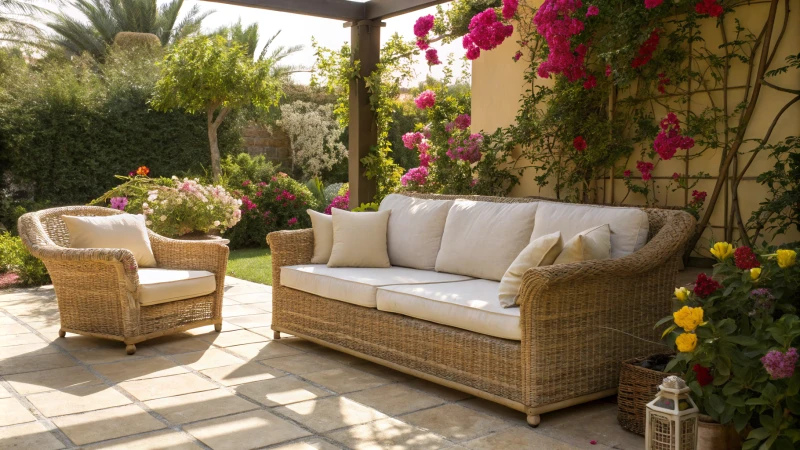
Are you prepared to improve your outdoor area with the right furniture material? Let’s explore a variety of textures and looks that truly change your patio or garden!
Natural rattan and resin wicker provide different benefits for outdoor furniture. Durability, maintenance and weather resistance are important to think about. Natural rattan has classic charm. But it requires more care. Resin wicker is very strong. It asks for less upkeep. It is perfect for many outdoor conditions.
I started my project to decorate my backyard oasis. I faced a choice between natural rattan and resin wicker. Each material tells a different story. Natural rattan has a classic charm. It gives an organic feeling. It reminds me of lazy summer days. But I discovered it needs a bit more care. The pretty pieces require extra attention. Resin wicker feels like a reliable friend. It withstands rain, sun and strong winds easily. It was clear each material offered unique strengths. Each could bring a special vibe to any outdoor space.
Natural rattan requires more maintenance than resin wicker.True
Natural rattan needs regular upkeep to maintain its appearance and durability, unlike resin wicker, which is low-maintenance and weather-resistant.
Resin wicker is less durable than natural rattan furniture.False
Resin wicker is generally more durable and resistant to outdoor conditions compared to natural rattan, making it a better choice for longevity.
What are the Key Differences Between Natural Rattan and Resin Wicker?
Do you feel confused choosing between natural rattan and resin wicker for your outdoor furniture? I completely understand! Let’s explore their key differences together. You will then choose the best one for your area.
Natural rattan has an organic charm but less durability. Resin wicker, on the other hand, is strong and synthetic. It also resists weather well. Outdoor settings often benefit more from resin wicker. It lasts longer and requires little upkeep.
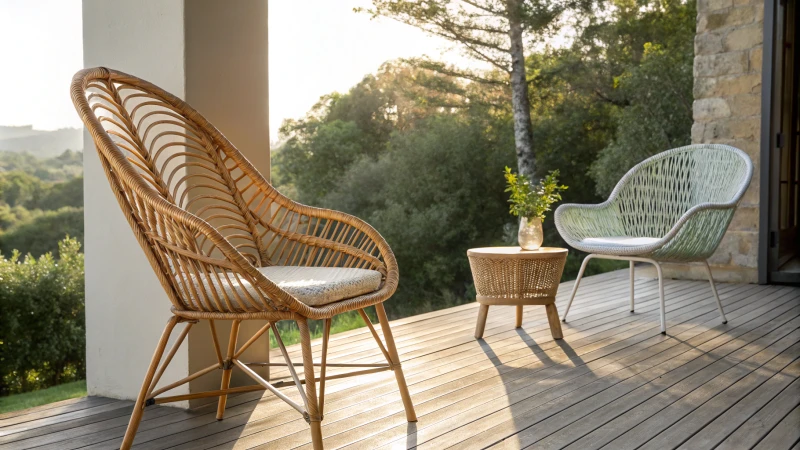
Understanding Natural Rattan
Natural rattan has a charm that’s hard to ignore. It comes from the rattan palm in tropical places. This material is strong and flexible. I still remember sitting on a rattan chair for the first time. The woven patterns felt like a warm hug, bringing a cozy atmosphere to my patio.
However, natural rattan has its own issues. It suffers from rain and sun, which can shorten its life. I’ve realized that taking some care helps. Regular maintenance, like applying protective coatings, keeps it fresh and beautiful. For a deeper understanding of how to care for rattan, check out our guide on rattan maintenance tips1.
Exploring Resin Wicker
Resin wicker is quite impressive! This synthetic option looks like natural wicker but has its own benefits. Made from high-density polyethylene (HDPE), it survives any weather. I felt happy discovering it wouldn’t fade in the sun – great for someone like me who forgets to cover furniture!
With little upkeep and easy cleaning, resin wicker suits those busy days when you just want to enjoy your outdoor space without any worries. To learn more about the benefits of using synthetic materials, read our article on synthetic vs natural materials2.
Durability Comparison
| Material | Durability | Weather Resistance | Maintenance |
|---|---|---|---|
| Natural Rattan | Moderate | Low | Regular upkeep |
| Resin Wicker | High | High | Minimal cleaning |
As illustrated in the table above, resin wicker truly stands out in durability and weather resistance. If planning to leave furniture outside, this choice might be a game-changer.
Cost Considerations
Natural rattan often costs more because it’s organic and requires a lot of work to make. I remember being shocked at the prices! In contrast, resin wicker tends to be more affordable while still looking stylish.
Understanding pricing trends is essential for making informed purchasing decisions. For detailed insights into pricing strategies for rattan products, check our market analysis on rattan pricing trends3.
Aesthetic Appeal
Both materials offer unique looks. Natural rattan gives a warm, earthy vibe that changes indoor spaces and adds a cozy touch to patios. I love its welcoming feel! Resin wicker, on the other hand, comes in many colors and finishes, allowing more customization to match modern designs.
For inspiration on how to incorporate these materials into your home décor, explore our gallery of rattan and resin designs4.
Natural rattan is more durable than resin wicker.False
This claim is false; resin wicker outperforms natural rattan in durability and weather resistance.
Resin wicker requires minimal maintenance compared to natural rattan.True
This claim is true; resin wicker is easy to clean and maintain, unlike natural rattan which needs regular upkeep.
How Does Weather Affect Natural Rattan and Resin Wicker Durability?
Have you ever thought about how the weather affects the strength of your favorite outdoor furniture? Let’s explore this together. Your investments should last through each season.
Weather conditions really affect the durability of natural rattan and resin wicker. Sunlight probably fades rattan. Moisture might damage it. Resin wicker offers better protection against sun and moisture. Resin wicker really resists these elements well.
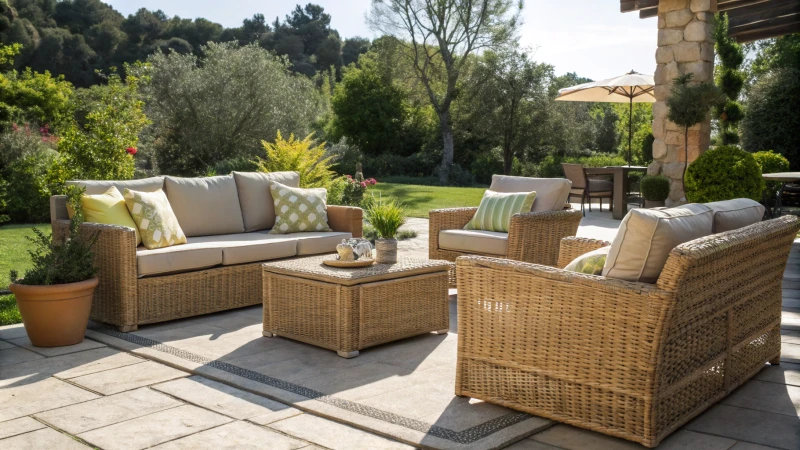
The Impact of Sunlight on Rattan Durability
Natural rattan and sunlight do not always mix well, much like my dislike for those very hot summer days. UV rays cause rattan to fade and weaken over time. I discovered this truth after leaving my beautiful rattan chairs under direct sunlight for too long. They ended up looking pale and fragile. To keep them vibrant, I now use UV-resistant coatings or move them to shaded areas during peak hours.
Moreover, the intensity of sunlight can vary greatly depending on your location. Living in Australia, I learned how strong UV radiation can be. It feels like nature reminding us to care for our things! I now choose well-finished furniture and if you live in a similar climate, I recommend the same.
Curious about sun protection for your rattan? Check UV protection methods5 for more information.
Rain and Moisture Resistance
Let’s discuss rain, which I’ve come to respect while living in a humid area. Natural rattan is porous, absorbing water easily. I once left my rattan furniture outside during heavy rain. Later, I found mold growing on it! This lesson taught me that resin wicker is a better option if you live where it’s wet or humid. It resists moisture, making it ideal for outdoor setups.
| Material | Moisture Resistance | Maintenance Level | Typical Use |
|---|---|---|---|
| Natural Rattan | Low | High | Indoor Use |
| Resin Wicker | High | Low | Outdoor Use |
Those interested in keeping rattan furniture in good condition during wet weather might find useful tips at maintenance strategies6.
Temperature Fluctuations and Longevity
Temperature affects both materials too. I have noticed that rattan becomes brittle in extreme cold or heat, like my own joints feeling stiff on chilly mornings! Resin wicker stays strong under these conditions. If you live where the weather changes dramatically, resin wicker is a better choice for outdoor furniture. It truly lasts over time.
To learn more about how temperature impacts these materials, visit temperature impact studies7.
Conclusion: A Choice Based on Environment
Choosing between natural rattan and resin wicker depends on your local weather and planned furniture use. Reflecting on my own experiences has guided me to make smart decisions. These choices enhance my home decor and support longevity. I hope this guide is as helpful to you as it has been for me in finding the right mix of beauty and practicality for your outdoor spaces.
Natural rattan is highly sensitive to UV rays.True
Prolonged exposure to sunlight can cause fading and brittleness in natural rattan, affecting its durability.
Resin wicker is more water-resistant than natural rattan.True
Due to its synthetic nature, resin wicker can better withstand moisture, making it ideal for humid areas.
What Maintenance Practices Should You Follow for Each Material?
Have you ever thought about how to keep your favorite home décor items fresh and bright? I certainly have! Different materials need special care. Each type of material requires specific attention.
Proper care of materials such as rattan, wood, metal and fabric is important. Different methods help keep them looking good and working well. Cleaning often is really important. Conditioning them is also necessary. Too much moisture should be avoided to protect these materials.
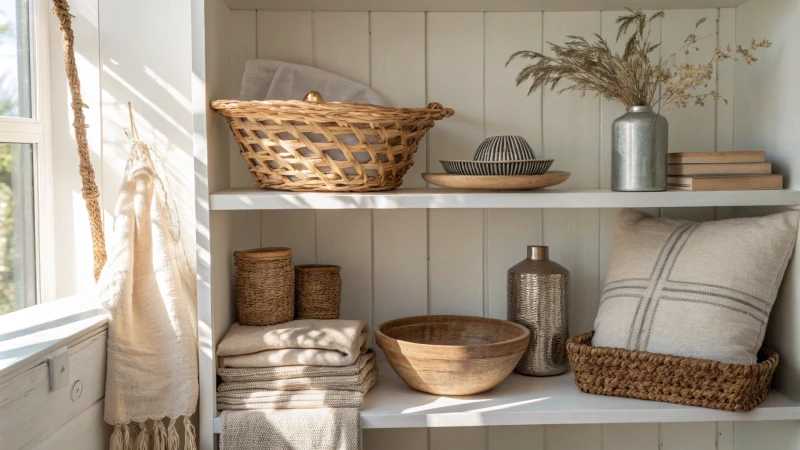
When it comes to maintaining various materials, each type demands specific care to ensure longevity and aesthetic appeal. Below, I explore maintenance practices tailored to different materials commonly used in home décor, including rattan, wood, metal, and fabric.
Rattan Maintenance Practices
Rattan furniture is special to me. I remember buying my first rattan chair. It felt like bringing a piece of nature inside. To keep it in great shape, I follow these steps:
| Practice | Description |
|---|---|
| Dust Regularly | A soft cloth or a vacuum with a brush gently removes dust. Dust settles quickly, which can be surprising! |
| Avoid Excess Moisture | Once, I spilled my drink on a rattan table and learned to wipe spills immediately to avoid damage. |
| Use Mild Soap | For deep cleaning, a damp cloth with mild soap cleans well. Another damp cloth helps remove soap residue. |
Wood Care Guidelines
Wood furniture offers warmth and I love the character it adds to my home. But wood requires special care:
| Practice | Description |
|---|---|
| Polishing | Use a wood polish every few months to maintain shine. |
| Conditioning | Apply a wood conditioner periodically to prevent drying out. |
| Temperature Control | Keep wooden items away from direct sunlight and heat sources to avoid warping. |
Metal Maintenance Tips
Metal surfaces can be prone to rust and tarnishing:
- Regular Cleaning: Use a soft, damp cloth to clean metal surfaces.
- Rust Prevention: Apply a thin layer of protective wax or oil if exposed to moisture.
- Polish When Needed: For shiny metals like brass or chrome, use a suitable metal polish as necessary.
Fabric Upkeep Recommendations
Fabrics bring texture and comfort but can be easily stained:
| Action | Frequency | Notes |
|---|---|---|
| Vacuuming | Weekly | Use an upholstery attachment. |
| Spot Cleaning | As needed | Use a fabric-safe cleaner. |
| Professional Cleaning | Annually | Consider for deep cleaning or large stains. |
By following these maintenance practices for each material, I’ve really increased the lifespan of my home décor items; they look beautiful! Everyone probably wants their home to shine.
If you want more tips on caring for materials and their unique properties, check out this guide8 or explore expert recommendations. It’s truly a journey worth taking!
Rattan furniture requires regular dusting to maintain its beauty.True
Regular dusting helps preserve the natural beauty of rattan by preventing buildup that can damage its surface.
Wooden furniture should be kept in direct sunlight to prevent warping.False
Keeping wooden items away from direct sunlight is crucial to avoid warping and maintain their shape and finish.
Which Material Offers Better Value for Money in Outdoor Furniture?
Choosing outdoor furniture materials is important. The right choice affects your experience a lot. So, which materials truly provide the best value for your money?
When selecting outdoor furniture, consider materials like teak, aluminum, rattan, and plastic for their unique value propositions. Durability, maintenance needs, cost, and aesthetic appeal play crucial roles in determining which material offers the best overall value.
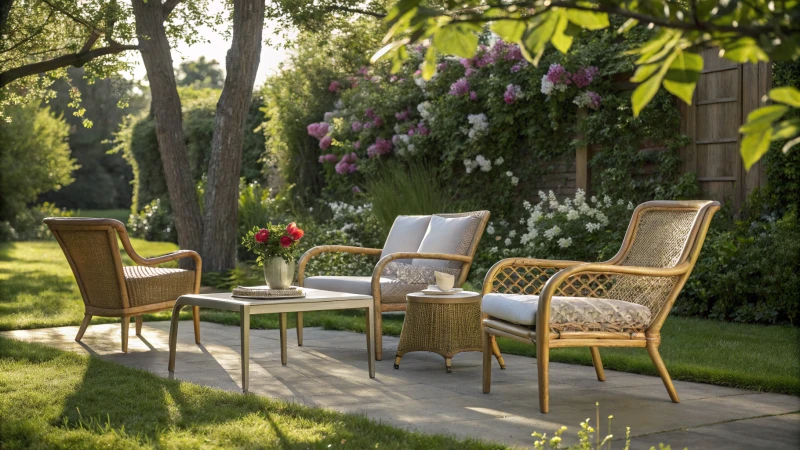
Understanding Value for Money in Outdoor Furniture
When evaluating outdoor furniture, the concept of value for money extends beyond just the initial purchase price. It includes factors such as durability, maintenance, and aesthetic appeal.
Consider materials like aluminum, teak, rattan, and plastic. Each offers unique advantages and disadvantages that impact their overall value.
Comparing Common Outdoor Furniture Materials
| Material | Durability | Maintenance | Cost | Aesthetic Appeal |
|---|---|---|---|---|
| Aluminum | High | Low | Moderate | Modern and sleek |
| Teak | Very High | Medium | High | Classic and elegant |
| Rattan | Moderate | Medium to High | Moderate to High | Natural and warm |
| Plastic | Low to Moderate | Very Low | Low | Versatile but less stylish |
By examining these attributes, buyers can gauge which material aligns best with their requirements and budget, ensuring a satisfactory purchase.
Durability Matters
Durability is a crucial factor when selecting outdoor furniture. Materials like teak are renowned for their resilience against weather elements, making them a long-term investment. For instance, teak can withstand rain and sun without warping or fading, often lasting decades.
Conversely, while plastic furniture is affordable, it may not endure harsh weather conditions, leading to a need for frequent replacements. This can ultimately negate the initial savings.
Maintenance Considerations
Another aspect to consider is maintenance. Some materials require more upkeep than others. Rattan, for example, might need regular cleaning and occasional treatments to protect against moisture and UV rays.
On the other hand, aluminum furniture typically requires minimal maintenance—just a quick wipe down to keep it looking good. Choosing a low-maintenance option could save both time and money in the long run.
Aesthetic Appeal vs. Practicality
Finally, consider the aesthetic you wish to achieve in your outdoor space. Rattan furniture offers a natural look that blends beautifully with greenery, while aluminum provides a contemporary feel. The right choice will depend on your personal style and how you want your outdoor area to function.
For those aiming for a chic outdoor lounge area, investing in high-quality rattan or teak may provide better value due to their blend of durability and elegance.
Key Takeaways
Ultimately, the best value for money in outdoor furniture will depend on your specific needs, preferences, and budget constraints. Exploring various options ensures you select the material that best meets your criteria without compromising on quality.
For further insights into specific materials and their performance in various climates, check out material durability comparisons9 or explore eco-friendly outdoor furniture options10.
Teak outdoor furniture lasts decades with proper care.True
Teak is known for its exceptional durability, resisting weather elements and maintaining its integrity for many years, making it a worthwhile investment.
Plastic furniture requires high maintenance compared to aluminum.False
Plastic furniture generally needs more frequent replacements due to lower durability, while aluminum offers low-maintenance benefits with simple cleaning.
Conclusion
Explore the differences between natural rattan and resin wicker for outdoor furniture, focusing on durability, maintenance, aesthetics, and cost to guide your purchasing decisions.
-
Discover the pros and cons of both materials to make an informed choice for your outdoor furniture needs. ↩
-
Explore various styles and applications of rattan and resin wicker in home décor. ↩
-
Gain insights into the cost implications of choosing natural versus synthetic materials for furniture. ↩
-
Get inspired by real-life examples of how both materials can enhance your living spaces. ↩
-
Discovering how weather impacts these materials will help you choose the right outdoor furniture for longevity and performance. ↩
-
Learn more about maintaining wicker furniture in various weather conditions for optimal longevity. ↩
-
Find out about the best types of outdoor furniture materials based on temperature resilience. ↩
-
Discover detailed maintenance practices for various materials to extend their lifespan and preserve their beauty. ↩
-
This link will guide you to detailed comparisons of outdoor furniture materials based on durability and cost-effectiveness. ↩
-
Discover sustainable options that align with eco-conscious values while providing excellent quality and durability. ↩

